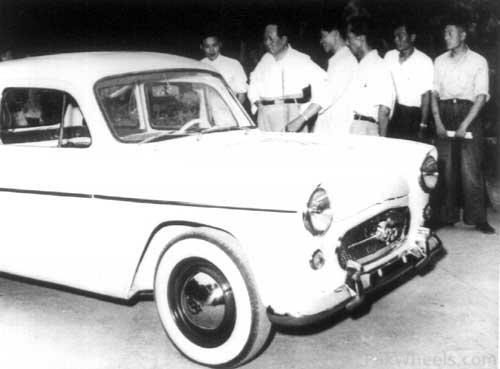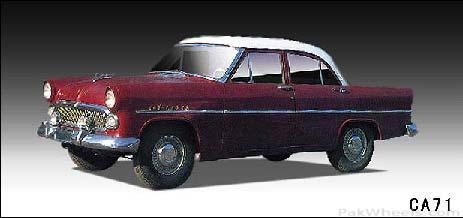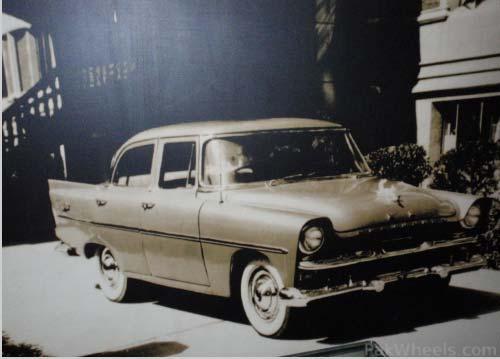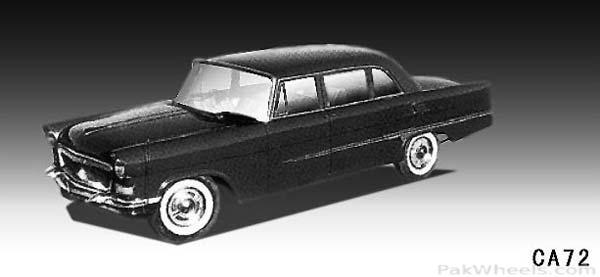This is the first part of a six part series that will take you on a journey through the six decades of Chinese automotive history in modern China. People think of China’s automotive history as starting in the late 90′s or early 00′s, in fact China has had cars for pretty much the same length of time as the USA. The first car to be imported in China was a German built Duryen model, and was brought to China in 1886 to please the Empress Dowager, although the car had to be modified to fit the cultural habits of the day before it was fit for an Empress. Even more scary is the fact that man selected to be her driver had no driving experience, it is a little wonder that the Empress did not die on its maiden trip, thankfully she lived to die from acute arsenic poisoning a few years later.
The 50′s

Dongfeng Liberation CA10
In the 1950′s China was going through a mini economic boom after multiple wars had destroyed infrastructure across the land, there was a demand for trucks but most of the trucks in China at the time came from their Superpower backs, the Soviets, and also the Americans who supplied the Nationalist party but they had to leave their trucks behind when they fled to Taiwan. The first Chinese truck, the Liberation (Jiefang) CA10, came down the production line on 13th July 1956 and was branded as a Dongfeng, although at that time Dongfeng was merely a brand that First Automobile Works owned, Dongfeng as know it was originally Second Auto Works.
The truck became the Chinese work horse throughout the 50′s and 60′s, certain variants can still be seen running around China’s neighbor, North Korea.
Jin Gang Shan

Jin Gang Shan
Jin Gang Shan maybe an area of Beijing, but it was also the first sedan that Beijing Auto Works produced. It came down the production line on 20th June in 1958 at Beijing’s first automotive products plant, and as soon as it was produced Beijing Auto Works changed their name to BAW.
The Jin Gang Shan sedan was reportedly based on the original VW Beetle in a bid to make it usable within Beijing’s then narrow Hu Tong’s and to get rid of the popular three wheeled motorbikes that were popular at the time. The Jin Gang Shan was powered by a 1.2L 4 cylinder engine, and also rear wheel drive. There are no reports of Hu Tong Drifting at the time, although a great name for a movie was born.
Dongfeng-CA71

Dongfeng CA71 Sedan
The Dongfeng CA71 was arguably China’s first luxury sedan and easily the rarest due FAW only producing 30 of the units. The engine was quite unusual in displacement, a 1.9L unit was used. The reasons for a small production run are not entirely clear, but it is probably due to the Great Leap Forward being in full swing and not wanting to be a waster of steel at a time when Mao was trying to boost China’s output to match the UK’s, FAW were probably not in the mood to waste materials on a luxury sedan.
Shanghai Auto’s Phoenix

SAIC's Phoenix
The Phoenix was the first car to come out of Shanghai Automotive Decoration factory, which we now know as the modern day automotive monster of SAIC. The first production cars came down on 28th September 1958 and owed its exterior styling to the American Plymouth Savoy, the engine was a 4 cylinder unit that Shanghai Auto copied from the Soviet Union’s Gaz M20 Victory engine.
Bureau leaders were able to drive the Volga M21 in China during the late 50′s, but with some help from Ford the M21 was put into production in China. Thanks to its relatively high chassis, stable suspension system and powerful engine the M21 became a popular car in China. In 1958 Shou Qi bought the rights to the M21 model. The Chinese government purchased 500 Volga’s in 1958 from the Soviet Union for use as VIP cars, but the use of these models was limited to bureau chiefs and higher.
Red Flag born:

HongQi CA72 - Chinese Luxury
In 1959, Chairman Mao was rather unimpressed with all of the Russian cars riding Chinese roads, and ordered FAW to get started on a Chinese luxury car for use by bureau leaders and VIP’s, the result was the first Hong Qi (Red Flag) model which was known as the CA72 and was used solely by the Communist Party’s Central Committee, only 202 of these particular models were put into production, and very few remain to this day.
source: Culture | China’s Automotive Development from start to now | China Car Times